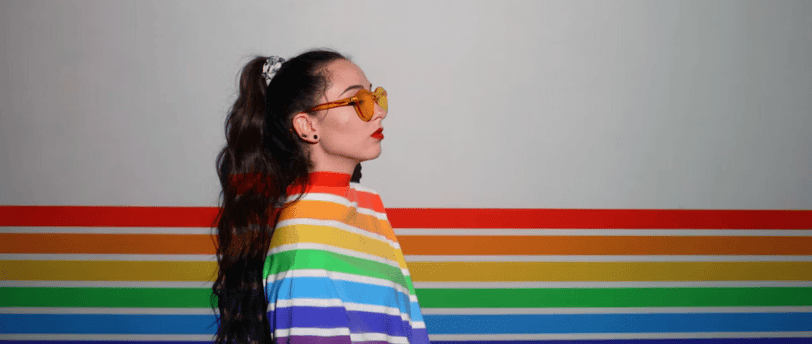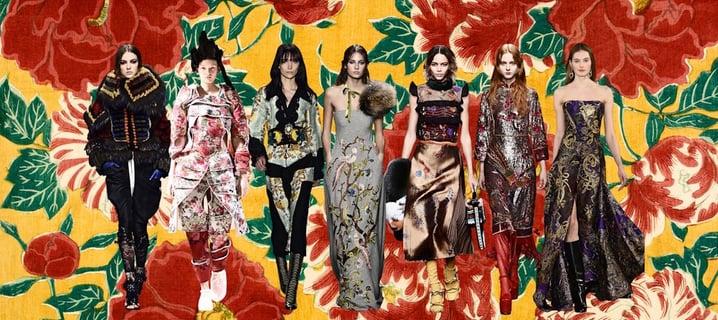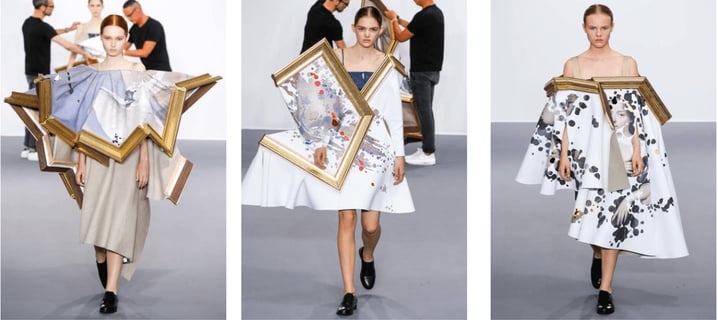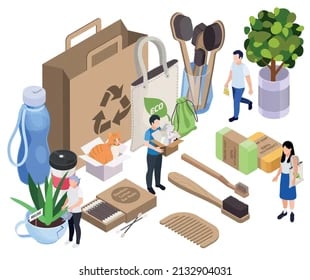From Canvas to Catwalk: The Fusion of Art and Style
Explore the fascinating relationship between art and fashion in our blog series "From Canvas to Catwalk: The Fusion of Art and Style." Discover the dynamic relationship between these two artistic disciplines as we examine the ways in which fashion impacts art and vice versa.
KARAN KUMAR BLOG
kara kumar
2/13/20248 min read


1. Introduction: The Intersection of Art and Fashion
Welcome to Karan kumar blog, where I discuss the mutually beneficial relationship between fashion and art. This blog explores the relationship between these two artistic disciplines and how, over time, they have inspired and affected one another. This blog explores the intriguing relationship between art and fashion, covering anything from the use of fashion to embody artistic concepts to using art as the main focus in fashion shows. From the canvas to the catwalk, this blog will take you on a journey that will interest anybody with an interest in art, fashion, or the creative professions. Come along with me as we explore the fascinating intersection of art and fashion.
2. The Influence of Art on Fashion.
Fashion designers have historically drawn influence from the arts. The striking hues, patterns, and forms present in paintings and sculptures have served as a never-ending source of creative inspiration for clothing and accessories. Fashion has benefited greatly from the innovative ideas that art has contributed, from the vivid patterns of Picasso's Cubist pieces to the delicate, dreamy tones of Monet's impressionist landscape paintings.
As a matter of fact, numerous well-known designers have joined up with artists to produce one-of-a-kind collections that straddle the lines between art and fashion. These partnerships have produced stunning clothing, turning artwork into wearable works of art. Fashion designers also frequently use art as a primary subject for their presentations, creating immersive runway experiences with art installations, backgrounds, and decorations.
Fashion designers pay homage to the artistic community and enhance the aesthetic expression of their designs by incorporating art elements into their creations. As we continue to explore the ways that fashion has impacted the realm of art, be sure to check out the following segment.
3. How Fashion Translates Artistic Expression.
Artistic expression can be conveyed through fashion in powerful and distinctive ways. The use of colour palettes is one method that fashion does this. Fashion designers use colour schemes to set certain moods and express their creative vision, just as artists use colour to convey emotions and meanings in their works of art. Colour is essential for bringing art to life on the runway, whether it's a collection that's bright and strong, inspired by a painting, or a collection that's delicate and muted, inspired by a sculpture.
Moreover, another way that art is transformed into wearable form is through the use of texture in fashion. Fashion designers employ a variety of fabrics and textures into their designs to give clothing a distinctive and creative appeal, much like artists utilise varied brushstrokes and textures to provide depth and visual interest to their work. Textures in fashion highlight the creative aspect, from the sumptuous feel of velvet to the detailed embroidery evoking the brushstrokes of a painting.
Last but not least, partnerships between fashion designers and artists demonstrate how fashion affects the arts. These partnerships frequently produce innovative and provocative designs that straddle the lines between fashion and art.
Finally, fashion may effectively convey and display artistic expression. Fashion designers are able to appreciate the art world while simultaneously producing their own works of art by utilising colour, texture, and teamwork. It is evident that there is a genuine harmony and dynamic link between art and fashion because of the way in which they both continue to develop and inspire one another.
4. Collaboration and Innovation: Artists and Fashion Designers.
The symbiotic relationship between art and fashion is brought to life through creativity and teamwork. Together, fashion designers and artists frequently produce innovative and thought-provoking creations that defy conventions and stretch the bounds of their respective fields. These cooperative endeavours produce avant-garde artworks that conflate fashion and art.
Artists and fashion designers are able to produce exceptional works that encapsulate the spirit of both art forms by combining their distinct perspectives and creative talents. These collaborations offer a new and fascinating viewpoint to the fashion industry, whether it is a fashion designer using an artist's painting as a print on a garment or an artist working with a designer to produce sculptural clothes.
These partnerships foster creativity and cross-pollination while also benefiting the participating artists and fashion designers. By collaborating, fashion designers and artists can advance the frontiers of their respective disciplines by learning from one other's methods, approaches, and creative visions.
By working together, the fashion and art industries are able to inspire and grow, resulting in a positive and vibrant connection. These collaborations have the ability to upend norms, spark discussions, and open doors for fresh approaches to fashion and the arts.
In conclusion, the mutually beneficial relationship between art and fashion is largely fueled by creativity and teamwork. A collaboration between fashion designers and artists produces original and ground-breaking pieces that push the envelope and stimulate fresh approaches to both art and fashion. The creative world is constantly changing, and working together can open doors by bringing new ideas and perspectives to the table. This is the power of collaboration.
5. The Catwalk as a Canvas: Fashion as Wearable Art.
Although it was once thought of simply a stage for fashion shows, the catwalk has evolved into a canvas for wearable art in recent years. Nowadays, designers of clothing are approaching the runway as if it were a blank canvas, showcasing their designs as individual pieces of art as well as clothing.
Fashion designers that push the envelope by turning their clothes into sculptures that defy conventional ideas of wearability include Alexander McQueen, Iris van Herpen, and Viktor & Rolf. The boundaries between fashion and art are blurred by these avant-garde works, which captivate audiences with their distinctive and provocative designs.
Designers can test out novel materials, avant-garde methods, and audacious ideas by using the catwalk as a canvas. They produce visually striking works that, like a painting or sculpture in a gallery, capture the attention of the audience and elicit a variety of emotions.
In addition to captivating the audience, this runway fusion of art and fashion offers a forum for storytelling and creative expression. Wearable art designers can question social conventions, send a message, and elicit a reaction with their creations. Artists and designers use the catwalk as a platform to push limits, start discussions, and leave a lasting impression on the fashion industry.
The catwalk thus transforms into a dynamic area where the conventional lines separating fashion and art are blurred. Fashion has evolved from being only about what we wear to being an engaging and captivating art form that blurs the boundaries between personal style and artistic expression.
We should anticipate more designers adopting the idea of fashion as wearable art as the industry develops. These visionaries will be able to translate their imaginative concepts into practical, wearable artwork by using the catwalk as a canvas going forward.
We will discuss how art movements influence fashion trends and how fashion designers get ideas from the art world in the upcoming blog section. Watch this space for a detailed examination of the intriguing relationship between fashion and art.
6. The Economic Impact of the Relationship.
Beyond only being creatively beneficial, the tie between art and fashion is also highly profitable. Combining these two sectors fosters consumer demand and boosts revenue in addition to providing a forum for artistic expression.
Fashion designers produce one-of-a-kind, special designs that appeal to a niche market when they include artistic aspects into their collections. Due to their uniqueness and ability to command greater prices, these wearable pieces of art draw collectors and enthusiasts eager to part with their cash. This extra source of income enables designers to keep experimenting and pushing the limits of fashion.
Moreover, partnerships between fashion designers and artists have grown in popularity. The fashion and art worlds become more interested in the collection as a result of these partnerships, which also build a buzz about it. Limited edition partnerships frequently see rapid sell-outs, boosting brand awareness and boosting revenue for both sides.
Not just the fashion sector is affected. The enhanced visibility that results from incorporating fashion with art is advantageous for museums and art galleries. Larger audiences are drawn to fashion displays, which boosts ticket sales and brings in more money for these cultural institutions.
All things considered, the connection between fashion and art is a powerful economic force. It piques customers' curiosity, boosts revenue, and aids in the expansion of both sectors. Further economic impact is to be expected as long as this relationship persists in developing and flourishing.
We will then explore how fashion trends are influenced by art movements and how designers get ideas from the art world. Watch this space to learn about the fascinating crossovers between the sartorial and creative domains.
7. Embracing Sustainability: The Future of Art-Fashion Synergy.
Sustainability is becoming a major factor as the symbiotic relationship between art and fashion continues to expand. More ethical and environmentally friendly methods have been increasingly popular in the fashion business in recent years, and this trend is now influencing the art world.
Both fashion designers and artists are realising that their designs must incorporate sustainability. Eco-friendly production methods, organic fibres, and recycled materials are being used more and more frequently. Both designers and artists are strongly emphasising the value of protecting our world and its resources by utilising these components in their creations.
The environmental benefits of this trend towards sustainability are matched by consumer demand. People are actively looking for things that reflect their ideals as they become more aware of the impact of their purchases. In addition to helping to create a more environmentally friendly future, artists and fashion designers are also meeting a rising consumer need by embracing sustainability.
The future of the fashion and art industries could be influenced by the adoption of sustainable methods in these fields. Customers that value sustainability are more likely to support companies and artists as they grow more aware and ethical. This change towards a more sustainable collaboration between art and fashion benefits not just the
but also creates fresh opportunities for inventiveness and creativity.
We will look at some of the creative ways that fashion designers and artists are embracing sustainability in the next section, along with how this is influencing the industry as a whole. Come along as we explore the sustainable art-fashion movement in further detail and see how it is transforming the field of creativity.
8.Conclusion: The Enduring Bond Between Art and Fashion.
In summary, the mutually beneficial relationship between art and fashion is both timeless and dynamic. These businesses are realising the need to change with the times, from incorporating eco-friendly methods to exploring sustainability. In addition to helping to create a more environmentally friendly future, artists and fashion designers are meeting consumer demand by adopting sustainable practices.
This kind of intersection between art and fashion creates new opportunities for creativity and innovation. This change towards a more environmentally friendly art-fashion synergy could influence the direction the sector takes in the future. Customers that value sustainability are more likely to support companies and artists as they grow more aware and ethical.
The timeless connection between fashion and art never fails to enthral, inspire, and question the status quo. It is the responsibility of fashion designers and artists to push the envelope and investigate uncharted territory in order to make a significant influence on both fields. We ask you to join us in celebrating the creativity and artistry that result from this symbiotic relationship as we wrap up our investigation of the relationship between art and fashion.






Contacts
Socials
Subscribe to our newsletter
+91 9508935878
Address - Laxamana nagar Sitamarhi Bihar INDIA 843302.
LEGAL ENTITY:- KK ENTERPRISES .COPYRIGHT 2024 ALL RIGHT RESERVED.

